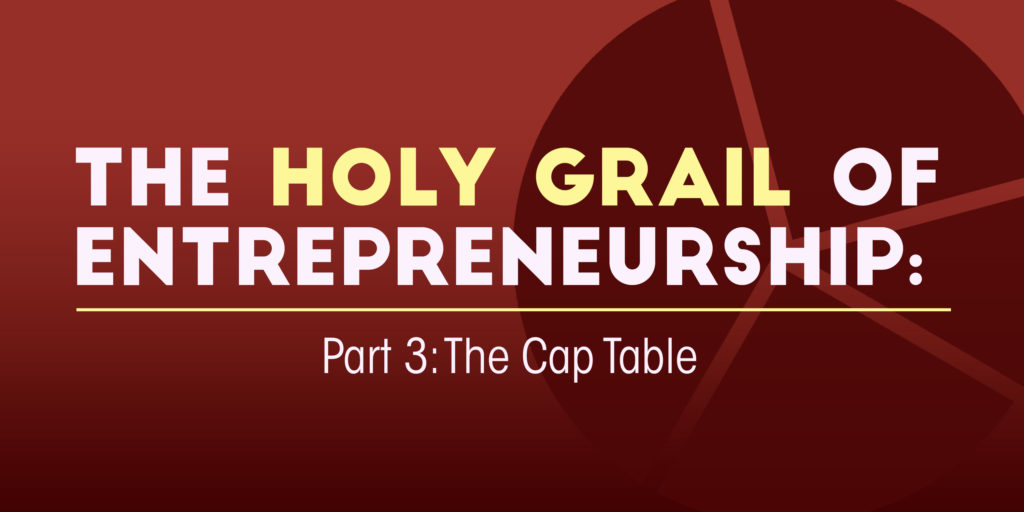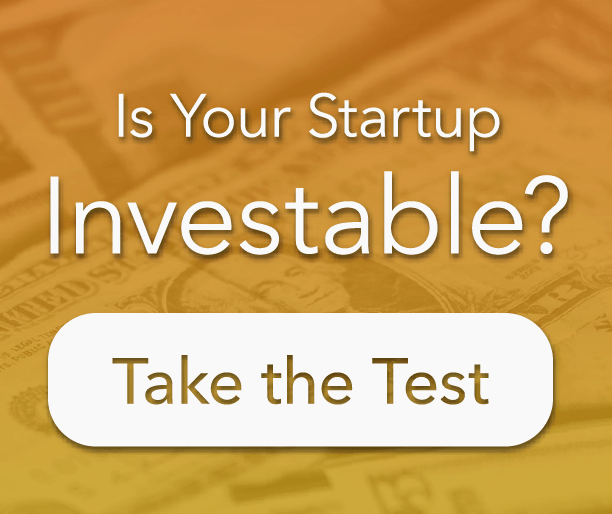
The capitalization table (cap table) summarizes who owns what part of the company before and after financing. It is one of the most important elements of the term sheet because it outlines the complete transaction succinctly using concrete numbers.
The Holy Grail of Entrepreneurship
Part 1, Part 2: Offering Terms
In this article we are going to use the fictional example of Slothware Technologies startup to answer the question: “What will I own if a VC invests X in my company at a Y valuation?”
Slothware begins as a startup issuing 3,000,000 shares; the founders and employees own 100% of the shares of the company at the time of incorporation.
The startup develops a brilliant product and is ready to scale, but does not have the capital to hire a seasoned CEO, launch a comprehensive marketing campaign, and purchase an office/warehouse building. The founders decide to seek outside investment from venture capitalists in a Series A round.
Capital VC receives Slothware’s slidedeck and term sheet in the mail and dives into its due diligence process. The fund managers find it to be a great opportunity and request a meeting with the Slothware founders.
At the meeting, Capital VC expresses its desire to invest $12.5 million in Slothware Technologies at a $25 million postmoney valuation.
A quick revisit to premoney and postmoney valuation.
In our scenario, the founders realize that Capital VC is valuing Slothware at $12.5 million premoney. They get excited. After long discussions, they agree to the terms, sign the legal documents, and receive the funding from Capital VC. But they forgot to take into account one very important piece of the pie: the employee option pool.
The term sheet required a 20% employee pool postmoney.
Did they make a mistake?
Let’s look at the cap table to find out whether it was a good decision or a poor one.
First, let’s look at what we already know of the deal. Below is the cap table with what is known already filled in.
Example Cap Table: Slothware and Capital VCs
| Class | Shares | Preferred Price | Valuation | Percentage |
| Founders | 3,000,000 | B | ||
| >Employee Pool | D | 20% | ||
| Capital VCs | E | F | $12,500,000 | A |
| Total | C | F | $25,000,000 | 100% |
To see if the Slothware founders made a sound decision, we must solve for the missing pieces.
Solving for A: How much do the VCs own?
To find Capital VCs percentage of ownership we take the total valuation and determine what percent is owned by the VCs. In our example, the total valuation is $25m and the VCs own $12.5m of it, which is 50%. A = 50%.
Solving for B: How much do the founders own?
At the end of the deal, the valuation of the company is $25m. To find the founder’s percentage of ownership, we must first subtract the VCs and the employee option pool ownership. We know that the employee option pool is 20% and we know from above that the VCs own 50%. This leaves us with the calculation 100% – 20% – 50% = 30%. The founders own 30% of their company. B = 30%.
Solving for C: How many shares are outstanding?
To find the total number of shares outstanding, we take the number of founders shares (3,000,000) and divide it by the founders ownership percentage (30%). We calculate 3,000,000/.30 and find it to be 10,000,000 outstanding shares. C = 10M.
Solving for D: How many shares are reserved for the employee option pool?
If we know that the founders own 30% of the company and they have 3,000,000 shares then we can solve for the number of shares in the employee option pool taking 20% of the number of shares outstanding (10,000,000). So 10,000,000 * .20 = 2,000,000 are allocated to the employee option pool. D = 2M.
Solving for E: How many shares do the VCs own?
In turn, we now can calculate the number of shares owned by Capital VCs by taking the total outstanding shares and subtracting the employee option pool and the founders shares. This looks like 10,000,000 – 2,000,000 – 3,000,000 = 5,000,000. The VCs own 5,000,000 shares of Slothware Technologies. E = 5M.
Solving for F: What is the preferred price of the shares?
Finally, to find the share price for the shares we look at the number of shares purchased by the VCs capital. In our example, $12.5m bought 5,000,000. Doing the calculation (12,500,000/5,000,000) we find the preferred stock price is $2.50 a share. F = $2.50.
| Class | Shares | Preferred Price | Valuation | Percentage |
| Founders | 3,000,000 | 30% | ||
| Employee Pool | 2,000,000 | 20% | ||
| Capital VCs | 5,000,000 | $2.50 | $12,500,000 | 50% |
| Total | 10,000,000 | $2.50 | $25,000,000 | 100% |
Finally, we always check our calculation. Since we know we have a $12.5 million premoney valuation, then the shares prior to the financing (3,000,000 founders’ shares plus the 20% option pool) times the price per share should equal $12.5 million. If we do this math, we find that (3,000,000 + 2,000,000) * $2.50 = $12,500,000. We can verify that this is correct by making sure it matches the premoney valuation, which it does.
Verdict
The founders sold the majority of their company away, reducing their return on investment and the control of the company. Generally speaking, founders will want to hold onto the majority of ownership through a Series A round so that they can continue to further funding rounds and retain decision-making power.
What could the Slothware Technologies founders have done differently? Negotiation. The founders moved quickly, got excited, and blindly accepted the investment without fully realizing the end result. This is where education, mentorship, and experience are invaluable to a junior startup team.
Matt Blumberg, CEO of Return Path, said: “If you do not have a great financially oriented founder, find someone who knows what he’s doing to help you with the cap table – not just someone who knows math (a good starting point!) but someone who knows cap tables and VC financings.”
Giving Away Startup Ownership: How Much is Too Much? [Infographic]
DISCLAIMER: This article may discuss issues for which legal advice should be considered prior to a decision or agreement with a third party. It should be noted that the author is not an attorney, and FundingSage is not a law firm. FundingSage’s employees and affiliates do not provide legal advice. We recommend you seek the services of an attorney if legal advice is required.









